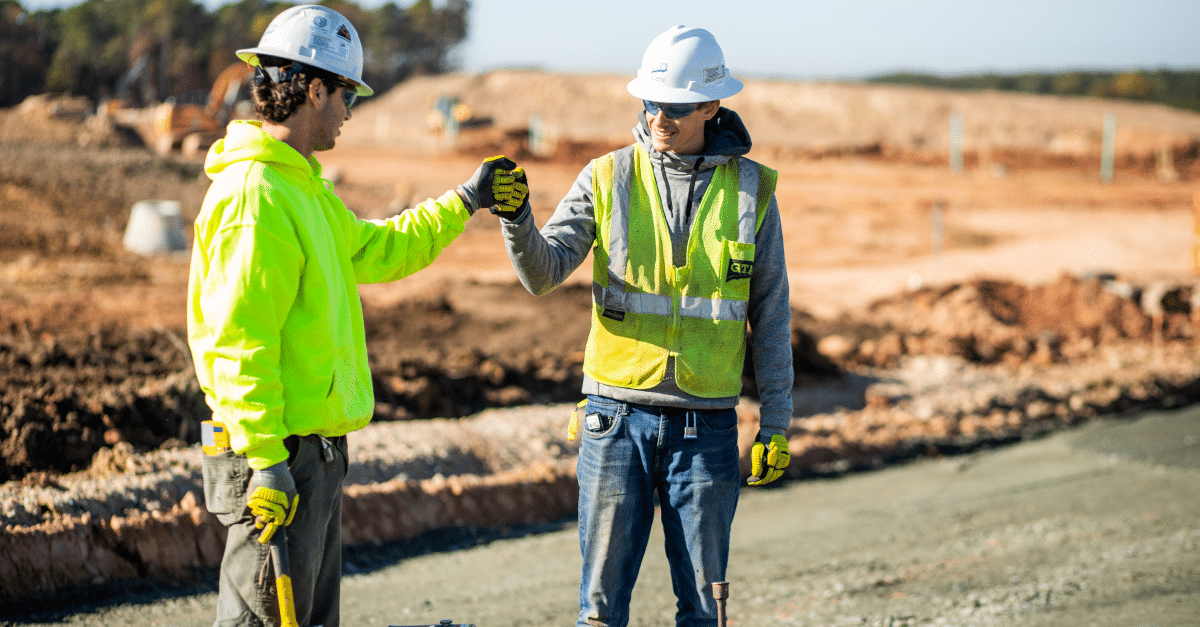3 Simple Techniques For Geotechnical Engineering For Construction Projects
The Buzz on Geotechnical Engineering For Construction Projects
Table of ContentsWhat Does Geotechnical Engineering For Construction Projects Do?Everything about Geotechnical Engineering For Construction ProjectsThe Best Strategy To Use For Geotechnical Engineering For Construction ProjectsHow Geotechnical Engineering For Construction Projects can Save You Time, Stress, and Money.The Ultimate Guide To Geotechnical Engineering For Construction ProjectsGetting The Geotechnical Engineering For Construction Projects To Work
The role of geotechnical engineering considerably handles realizing the features of soil and rock, which might differ significantly by their density, dampness material etc. These functions have to be examined by geotechnical designers to anticipate their activities under numerous situations. The safety as well as stability of structures are impacted by soil problems, making this evaluation needed., in addition to exactly how they connect with buildings that have actually been set up on or within them, is one of the primary descriptions for why geotechnical engineering is vital.
Along with structural planning and construction, geotechnical design is also vital to the repair and maintenance of pre-existing frameworks. Age-related destruction or extra troubles can affect a framework's stability and efficiency. Ecological defense is accomplished through geotechnical engineering. Expertise in air, water, and soil top quality upkeep is used by geotechnical engineers to minimize the unfavorable impacts of jobs.
To sum up, geotechnical design is an important self-control that protects the durability and integrity of civil facilities. Geotechnical designers contribute to making structure jobs effective all over the globe by recognizing the behaviour of planet materials and using appropriate preparation techniques.
Geotechnical Engineering For Construction Projects Can Be Fun For Everyone
The foundational stability of any kind of task is essential. Geotechnical design plays a vital function in making certain that structures are improved solid ground, literally and figuratively. By checking out dirt, rock, and subsurface problems, geotechnical designers provide crucial understandings that aid in the design, building, and maintenance of structures and facilities.

The Definitive Guide for Geotechnical Engineering For Construction Projects
Lab screening: Determining the residential properties of soil and rock. Field testing: Carrying out examinations on-site to analyze problems. Evaluation and style: Making use of data to develop foundations, preserving walls, passages, and various other structures. Numerous prominent building jobs have actually successfully used geotechnical design to ensure their stability and safety. :: The world's tallest building called for a deep understanding of the underlying geology.

As a leader in geotechnical design, BECC Inc. is dedicated to providing cutting-edge and reliable services that meet the highest possible criteria of top quality and security. For additional information on just how BECC Inc. can sustain your following building project, contact us today and allow us aid you develop on solid ground.
William Rankine, an engineer and physicist, developed an alternate to Coulomb's planet stress theory. Albert Atterberg established the clay uniformity indices that are still utilized today for dirt classification. In 1885, Osborne Reynolds identified that shearing reasons volumetric useful site extension of thick products and contraction of loose granular materials. Modern geotechnical engineering is stated to have started in 1925 with the magazine of Erdbaumechanik by Karl von Terzaghi, a mechanical designer and rock hound.
The Ultimate Guide To Geotechnical Engineering For Construction Projects
Terzaghi also developed the structure for concepts of birthing ability of foundations, and the concept for prediction of the price of negotiation of clay layers because of consolidation. After that, Maurice Biot totally established the three-dimensional soil loan consolidation concept, prolonging the one-dimensional version previously developed by Terzaghi to a lot more general hypotheses and introducing the see this page collection of basic formulas of Poroelasticity.
Geotechnical designers examine and establish the residential properties of subsurface problems and products.
8 Simple Techniques For Geotechnical Engineering For Construction Projects
Get More Info , which uses a thick-walled split spoon sampler, is the most typical means to collect disturbed samples.

Generally, the interface's exact geometry is unidentified, and a simplified user interface geometry is thought. Finite inclines need three-dimensional versions to be analyzed, so most slopes are analyzed assuming that they are considerably large and can be stood for by two-dimensional versions.
The Greatest Guide To Geotechnical Engineering For Construction Projects
The observational technique may be referred to as adheres to: General exploration enough to develop the rough nature, pattern, and residential or commercial properties of down payments. Evaluation of one of the most possible conditions and one of the most undesirable imaginable discrepancies. Producing the style based upon a working hypothesis of actions prepared for under one of the most probable problems. Option of amounts to be observed as building proceeds and determining their prepared for values based upon the working theory under the most unfavorable conditions.
Dimension of amounts and analysis of real problems. Style alteration per real problems The empirical method appropriates for construction that has already begun when an unexpected growth happens or when a failing or mishap looms or has already taken place. It disagrees for projects whose layout can not be modified throughout building and construction.